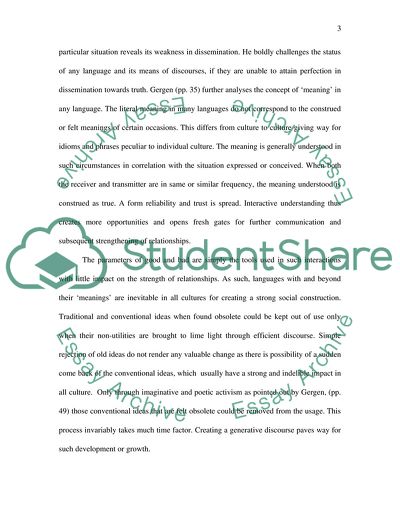Cite this document
(Constructionism Offers a Bold Invitation to Build New Futures Coursework, n.d.)
Constructionism Offers a Bold Invitation to Build New Futures Coursework. Retrieved from https://studentshare.org/sociology/1718987-constructionism-offers-a-bold-invitiation-to-transform-social-life-to-build-new-futures-gergan-2001-p49-critically-evaluate-this-statement-with-reference-to-social-constructionist-critiques-of-positivistic-psychology
Constructionism Offers a Bold Invitation to Build New Futures Coursework. Retrieved from https://studentshare.org/sociology/1718987-constructionism-offers-a-bold-invitiation-to-transform-social-life-to-build-new-futures-gergan-2001-p49-critically-evaluate-this-statement-with-reference-to-social-constructionist-critiques-of-positivistic-psychology
(Constructionism Offers a Bold Invitation to Build New Futures Coursework)
Constructionism Offers a Bold Invitation to Build New Futures Coursework. https://studentshare.org/sociology/1718987-constructionism-offers-a-bold-invitiation-to-transform-social-life-to-build-new-futures-gergan-2001-p49-critically-evaluate-this-statement-with-reference-to-social-constructionist-critiques-of-positivistic-psychology.
Constructionism Offers a Bold Invitation to Build New Futures Coursework. https://studentshare.org/sociology/1718987-constructionism-offers-a-bold-invitiation-to-transform-social-life-to-build-new-futures-gergan-2001-p49-critically-evaluate-this-statement-with-reference-to-social-constructionist-critiques-of-positivistic-psychology.
“Constructionism Offers a Bold Invitation to Build New Futures Coursework”. https://studentshare.org/sociology/1718987-constructionism-offers-a-bold-invitiation-to-transform-social-life-to-build-new-futures-gergan-2001-p49-critically-evaluate-this-statement-with-reference-to-social-constructionist-critiques-of-positivistic-psychology.


